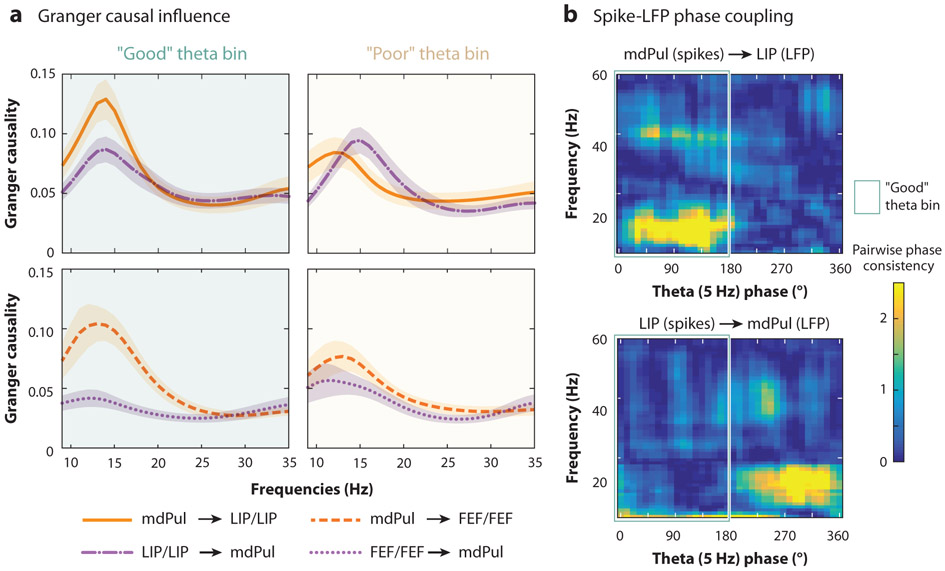Figure 6.
The role of the pulvinar in spatial attention. While there has historically been a cortico-centric bias in attention research, recent work has shown that subcortical structures can also direct attention-related function. The mediodorsal pulvinar (mdPul), for example, seems to specifically organize higher-order cortical nodes of the attention network during theta-rhythmic periods associated with better behavioral performance (i.e., during the “good” theta phase). This apparent directionality between mdPul and higher-order cortices is observable in both (a) Granger causal influence and (b) spike-LFP phase coupling. Attentional control seems to shift to LIP during theta-rhythmic periods associated with relatively worse behavioral performance (i.e., during the “poor” theta phase). The green outline indicates the “good” theta phase. These findings demonstrate moment-to-moment changes in functional connectivity, reflecting functional specialization within different nodes of the attention network. Figure adapted with permission from Fiebelkorn et al. (2019). Abbreviations: FEF, frontal eye fields; LFP, local field potential; LIP, lateral intraparietal area.

